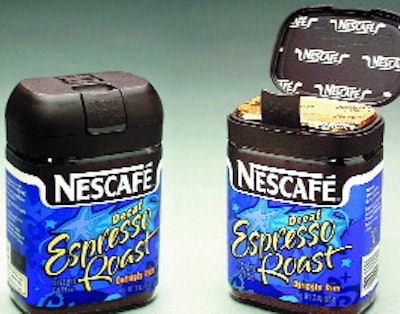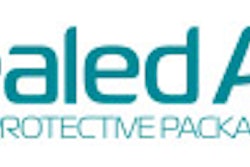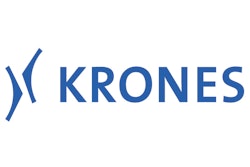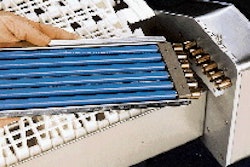
The challenge of this elitist bumper-sticker saying implies the existence of a higher life form to which those of us who do not own the bumper have not yet advanced. It suggests that some of us-and I'm pretty sure I'm among those who remain evolutionally challenged-probably never will evolve beyond our present states. On the other hand, it seems to me that contemporary commercial packaging is continuously evolving. It has advanced through at least three performance-hierarchy life forms and stands on the cusp of a fourth. These life forms are: The package as holder. As the defining characteristic separating all things into packaging and non-packaging categories, this is the most basic container life form. All packages, after all, can hold something. Even our prehistoric ancestors relied on holders (shells, rocks and bones with depressions that served as reservoirs, skins, plants, etc.). Although the holder life form is packaging's oldest, it continues to evolve, as with the relatively recent emergence of its minimalist genre, the flexible stand-up pouch for liquids. The package as blocker. Our more-evolved (than prehistoric humanoids) great-great-grandparents relied on corked glass and ceramic bottles, wooden barrels and boxes, sealing wax, tins, etc. to contain and preserve the goods they produced. Here too, a basic packaging life form continues to evolve. Nanocomposite clays that add barriers to various polymers would be a good example. The package as reactor. More recently we've enjoyed the benefits of packages built to adjust to physical and chemical changes in their environments. Corrugated cushions against shock, strategically placed vacuum panels that collapse so that hot-filled plastic bottles don't, and so on. The container as anticipator. Here, the package has some latent capability that lies dormant until called upon. A newly commercial package that is a good example of this fourth and most sophisticated packaging life form is the new glass jar Nestlé USA (Glendale, CA) is debuting for Nescafé Espresso Roast instant coffees (see photo). Its latent capability is oxygen scavenging. A lot of evolved (out-of-the-box?) thought went into this package. First of all, the jar has a rectangular footprint. On the one hand, this promotes cube efficiency (vs the less-evolved cylindrical footprint). On the other hand, the non-cylindrical container shape poses labeling and capping challenges that demand more advanced material and machinery evolutions than simple rounds do. Applying a roll-on label to a rectangular container is trickier than putting one on a round jar. Departing from the high-gloss food label norm, Espresso Roast relies on a high-contrast matte finish coextruded polypropylene label converted by Salem Label Co. (Salem, OH) and applied on a Contiroll roll-fed labeler from Krones, Inc. (Franklin, WI). As far as capping is concerned, this package anticipates the emergence of a new closure class. Rectangular container mouths present the classic round-peg-in-a-square-hole challenge. Of the closures on the U.S. market today, 98% are round. (That's a guess, but it's probably not far off. If you know better, let us know.) Round closures are seated on their containers by means of threads or lugs that screw into place. By contrast, Espresso Roast's high-dome, injection-molded, one-piece PP closure snaps onto the jar and incorporates an integral snap-lock hasp to resecure the lid once the jar is opened. If that's all there was to this container, it could easily be categorized as a highly evolved Holder, Blocker and Reactor package. What warrants its inclusion in the Anticipator category is the special liner that snaps under the dome of the closure. The liner carries a random print of the Nescafé name. But this liner is no mere brand-brandishing container sealer. For when the jar's foil membrane seal is removed, the multilayer polymer liner goes to work adsorbing residual oxygen from the headspace of the jar as well as from the coffee itself. The result: longer, fresh-tasting instant espresso shelf life. Two other examples of packaging concepts in the Anticipator category come to mind. One is the Intelimer® family of temperature-sensitive polymers from Landec Corp. (Menlo Park, CA) that converts the polymers into Intellipac(TM) membranes. Their oxygen permeability expands and contracts at specific temperature thresholds. Pouches with Intellipac patches extend the life of fresh-cut produce by letting it breathe easier as temperatures change. The other is a new oxygen-scavenging OS1000 lidstock film developed for modified-atmosphere packaging by Sealed Air's Cryovac North America (Duncan, SC). In this case, the film's scavenging is held in check until-as it is being applied as lidstock-a beam of ultraviolet light releases it. Now that's evolved! OS1000 debuts at Pack Expo this month and is the focus of a Future-Pak conference presentation.


























